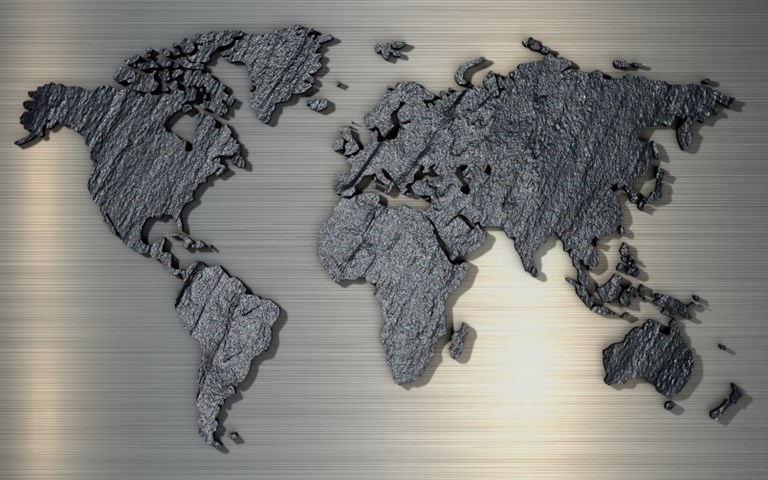Border controlThe last few years has pushed a new wave of resource nationalism, and it is likely to grow as global demand for critical minerals continues to push countries to protect their supplies

Richard Williams used to talk up the benefits of investing in Tanzania. As the chief executive officer of Winshear Gold—formerly Helio Resources—recalled, the East African country had a lot going for it when his company acquired the SMP gold project in 2006. The presence of major players like Barrick Gold and AngloGold Ashanti in the country meant there were acquisition opportunities for a junior miner that struck a favourable deposit, and sent the right message to investors about Tanzania’s attitude towards foreign companies.
Williams also touted the country’s mining laws, which allowed a company to convert a prospecting licence to a retention licence that gave it up to 10 years to do additional work on a fledgling project and wait out unfavourable economic conditions.
That changed following the election of President John Magufuli in 2015. Tanzania overhauled its mining act in 2017 to boost royalties on gold from four per cent to six per cent plus a one per cent export fee, introduce the requirement for the state to have no less than a 16 per cent interest in the capital of mining companies, and give itself the ability to cancel or renegotiate mining contracts. It also later removed retention licences from the act entirely, leaving Winshear and other juniors in limbo.
Williams said the company was told the Tanzanian government had no intention of expropriating mining concessions. Then, in late December 2019, the government publicized a list of properties being put out to tender; SMP was on it. Williams received the news of the list with “shock and disappointment.”
The company sought arbitration at the International Centre for Settlement of Investment Disputes, and in the fall of 2023, Winshear reached a US$30 million settlement with the government.
Winshear’s tussle with Tanzania turned out to be a precursor to a growing wave of resource nationalism. The term has historically invoked asset seizures and the nationalization of entire industries, but experts now include other reforms that countries enact in service of deriving greater benefit from their mineral resources under the resource nationalism label. These include tax and royalty increases, raw material export bans and setting joint venture requirements between private companies and state-owned miners—and even the critical minerals strategies and legislation that Canada, the United States and the European Union have implemented to encourage the development of domestic green industries or mandate local content.
“Resource nationalism has evolved a lot over the past five years. It’s no longer just about the state taking greater control, but also about the discussion of resource governance and resource security,” said Jimena Blanco, the Spain-based senior research director and chief analyst at Verisk Maplecroft. “It’s become a much more nuanced conversation about taking control or having influence over strategic resources.”
Donald Kingsbury, an assistant professor in political science and Latin American studies at the University of Toronto’s Munk School of Global Affairs and Public Policy, drew the distinction between two separate but interrelated trends: gestures towards more traditional resource nationalism, such as those in South American countries, which he said “resonates with an entire history of anti-imperialism, social movements and struggle,” and the simultaneous reintroduction of industrial policy in north Atlantic countries.
Root causes
According to Wojciech Ostrowski, senior lecturer at the University of Westminster in the U.K. and the co-convenor of the university’s climate change, energy policy and sustainability research group, resource nationalism is commonly, but incorrectly, seen as a cyclical phenomenon tied to commodity price booms. Economists and researchers often point to the resource nationalism of the 1920s and ’30s, the 1970s and the early 2000s as evidence of its repeat nature.
But, as Ostrowski argued in a 2023 paper in the journal Resources Policy, that understanding masks the very different underlying reasons in each wave. The supposed two separate waves in the 20th century were actually one and the same, he wrote, a decades-long trend of nationalizing extractive industries in Latin America and the Middle East that were deeply tied to countries’ efforts to shed themselves of colonial structures.
In the early 2000s, meanwhile, Ostrowski said resource nationalism in Venezuela, Ecuador, Bolivia, Russia and other Central Asian and Caucasus region countries were largely driven by a desire to renegotiate deals with foreign companies that had been signed in the 1990s, when commodity prices were low and neoliberalism was at its peak. Those contracts’ terms, he argued, were often deeply unfavourable to host countries. “[Companies] were really pushing [those contracts] and should not have complained that when commodity prices increased, [countries] wanted to renegotiate,” he said.
Now, countries are positioning themselves to take advantage of the anticipated global demand for critical minerals amidst the transition to a low-carbon economy. For many western countries, experts say, another driving factor is addressing the dominant position of nations like China and Russia in the extraction and processing of numerous critical minerals or other resources, by building up their own domestic supply chains and incentivizing businesses to invest in more likeminded jurisdictions.
Blanco noted that in some countries, governments are also seeking to improve their finances after the fiscal impacts of the COVID-19 pandemic.
“There are security issues at stake and political issues at stake, as well,” said Michael Pickersgill, partner at Torys LLP and head of the firm’s mining and metals practice.
Pickersgill said growing resource nationalism is leading to a major slowdown in the number of new bilateral investment treaties being signed between countries, and an increase in attempts to renegotiate existing ones to add carve-outs that would give governments more leeway to change laws and regulations without having to compensate foreign companies. “The governments are saying, ‘Why are we allowing a foreigner to dictate how we operate? Why are we allowing foreign investment treaties to provide huge remedies if we change the course of action in our own affairs?’”
Global phenomenon
There has been no shortage of resource policy upheavals in the last couple of years. In 2023, both Mexico and Chile moved to nationalize their lithium industries, Chile finalized its increased copper royalty regime and Mexico enacted a series of mining reforms that, among many other changes, cancelled all mining concessions that existed prior to the reform and now subjects all concessions to public bidding. Indonesia implemented an export ban on raw bauxite, cobalt and tin in 2023, after enacting one on unprocessed nickel in 2022. Zimbabwe and Namibia introduced export bans on unprocessed lithium in 2022 and 2023 respectively, and Ghana is reportedly considering the same.
According to data from the Resource Nationalism Index that Verisk Maplecroft published in February 2023, 25 of the 27 European Union member countries experienced a “significant uptick” in their rankings, as they sought to protect their own consumers from the energy crisis created by Russia’s invasion of Ukraine. Blanco noted many other countries also saw more resource nationalistic tendencies. “One key takeaway is when we look at our data, we’re starting to see an increasing number—the bulk of countries—[rated] medium or high risk.”
In perhaps the most high-profile example of 2023, Canadian miner First Quantum Minerals (FQM) was forced to shut down its Cobre Panama copper mine. Five years earlier, Panama’s Supreme Court had declared the initial 1997 contract between the mine operator and the government, under which the company paid a two per cent royalty, to be unconstitutional. After a delay, a new contract was developed that would have implemented a minimum annual royalty payment of US$375 million with potential significant increases depending on the mine’s operational and financial performance, and commodity prices; it gave the company a 20-year term, with the option to renew for another 20 years, given the projected 40-year lifespan of the mine. The revised contract drew widespread protests and port blockades; it ultimately was also ruled unconstitutional, and the mine was shut down in December.
 Protesters wave Panamanian flags in Panama City on Oct. 24, 2023, during a protest against a contract between the Panamanian government and First Quantum Minerals. Photo: Shutterstock
Protesters wave Panamanian flags in Panama City on Oct. 24, 2023, during a protest against a contract between the Panamanian government and First Quantum Minerals. Photo: Shutterstock
“There was a strong push on the part of the Panamanian government to improve the economic terms, hence taxes and royalties were a key element of the negotiations over the new contract,” a spokesperson for FQM told CIM Magazine. For its part, FQM pushed for the right to international arbitration to be part of the contract. “We understood the wish of the Panamanians to receive a fair and equitable share of the economic benefits of the mine, and the new contract provided this.”
The spokesperson said the country’s lack of an established mining industry or mining legislation has made it unique among the jurisdictions the company is active in: “That lack of a framework is one issue that has made the legal process somewhat more challenging.”
But this is not just a trend among developing economies; at the end of 2023 the European Union passed its Critical Raw Materials Act, which is aimed at diversifying its supply of 34 critical minerals, reducing strategic dependency on China, Turkey and South Africa and boosting domestic extraction and processing. The United States and Canada introduced the Inflation Reduction Act and the Critical Minerals Strategy, respectively, in 2022, with financial incentives for domestic critical minerals mining, processing and manufacturing projects.
 Jonathan Wilkinson, Canada’s Minister of Energy and Natural Resources, announces the country’s Critical Minerals Strategy on Dec. 9, 2022. Courtesy of Jonathan Wilkinson via Twitter
Jonathan Wilkinson, Canada’s Minister of Energy and Natural Resources, announces the country’s Critical Minerals Strategy on Dec. 9, 2022. Courtesy of Jonathan Wilkinson via Twitter
But Canada is not just waving the carrot—it is also wielding a big stick, cracking down on state-owned investment (read: Chinese) in Canadian critical minerals companies.
In late 2022, the federal government announced it would require any attempted investment or acquisition of a domestic mining company by a state-owned enterprise to go through a national security review (NSR). And in the fiscal year 2022-23, the number of extended NSRs reached a record 32 investments—a 33 per cent increase from 24 investments in the previous year, according to the Investment Canada Act annual report. The governor in council ordered three Chinese firms to divest their investments in Canadian lithium companies, and eight reviews resulted in withdrawal from the review process. Two of those reviews were of mining transactions with Chinese investors, one a minority stake and one an attempted acquisition.
Money matters
Countries toughening up their resource policies can see short-term financial benefits, though experts say the long-term outlook depends on the strategy.
In Indonesia, almost US$14 billion has been invested in nickel smelter capacity in the country, and President Joko Widodo has boasted that its export ban on unprocessed nickel has generated a 30-fold increase in the value of the country’s nickel exports.
But Blanco said such measures can only be so effective. Speaking specifically to raw export bans, she noted that while the policies are intended also to promote industrialization, “when companies are looking at their strategies, they don’t want to be forced by an external party to decide where they should process or shouldn’t process.
“We see this across different economies, not only the export of hard commodities but even countries that put in place currency or capital controls. For a short period of time, it generates a boom in whatever it is they’re trying to control…but after five or 10 years those players have to come up with a new strategy. They may just reduce investments, or maintain their investments but not expand their operations.”
Chile faced the threat of reduced mining investment when it announced plans to increase copper royalties in 2018. Santiago Montt, CEO at Vancouver-headquartered junior Los Andes Copper, which is developing the Vizcachitas property in central Chile, said the Chilean Congress’ approach was initially “way beyond any reasonable comparative reference,” and caused an outcry from industry. Montt was the vice-president of corporate affairs for the Americas at BHP at the time.
After a government change-up in early 2022, new President Gabriel Boric’s government introduced a tax reform bill proposing to fund a new public pension program by increasing royalties on companies that receive more than 50 per cent of their annual sales from copper and produce more than 50,000 tonnes per year. The proposed royalty would have had an ad valorem tax between one and four per cent and a tax rate between two per cent and 32 per cent on profits when copper prices were between US$2 and US$5 per pound.
 Chile’s President Gabriel Boric takes selfies with supporters on Apr. 21, 2023, after an announcement that the country would nationalize its lithium reserves. Courtesy of Gabriel Boric via Twitter
Chile’s President Gabriel Boric takes selfies with supporters on Apr. 21, 2023, after an announcement that the country would nationalize its lithium reserves. Courtesy of Gabriel Boric via Twitter
After executives from BHP and Antofagasta Minerals spoke out—with both companies saying they would re-evaluate their future investments in the country—and months of engagement with industry, Chile passed a revised royalty regime in 2023. Companies will pay an average of 43 to 44 per cent of pre-tax earnings at a copper price of US$3.70 per pound, and the government plans to send a greater portion of the royalties back to communities in which miners operate.
“Some feel the burden of the royalty puts the country in a position where some competitiveness is lost, but the appetite for [higher compensation] is satisfied and that gives stability,” Montt said, adding that it sets the country up well for supplying copper for the energy transition, with Boric setting a goal of increasing Chile’s copper production by just over one million tonnes by 2026.
Canada has also seen some pushback to its own policies. In response to its hard line on investment by foreign state-owned enterprises in homegrown companies, Montreal-based SRG Mining Inc., which owns a graphite project in West Africa, re-domiciled outside of the country in late 2023, while retaining its TSX Venture listing, to ensure its sale of a 19.4 per cent equity stake to Chinese company Carbon ONE New Energy Group went ahead. Other juniors have reportedly continued to seek out Chinese investors.
Blanco acknowledged that some countries with substantial deposits of key minerals—particularly those that are known to have fewer remaining reserves around the world—could be in a position to become “new power brokers,” depending on the strength of their internal institutions and ability to negotiate with foreign investors.
Navigating choppy waters
At a time of heightened geopolitical uncertainty, Fred Pletcher, partner at Borden Ladner Gervais and chair of the law firm’s mining group, said that companies looking to protect themselves may benefit from political risk insurance.
 Mexican president Andrés Manuel López Obrador (centre, waving) with energy minister Rocío Nahle (left), Sonora governor Alfonso Durazo (second from left) and economy minister Raquel Buenrostro (right) at an event to sign a decree to nationalize the country’s lithium mining industry on Feb 18, 2023. Courtesy of the government of Mexico
Mexican president Andrés Manuel López Obrador (centre, waving) with energy minister Rocío Nahle (left), Sonora governor Alfonso Durazo (second from left) and economy minister Raquel Buenrostro (right) at an event to sign a decree to nationalize the country’s lithium mining industry on Feb 18, 2023. Courtesy of the government of Mexico
Savvy companies are also likely to enhance their risk-mitigation strategies and structure their investments to target countries with investment protection treaties and trade agreements in place, he said. “There’s a lot of jurisdiction shopping that goes on on that basis to protect yourself.”
Pickersgill said it is increasingly common for companies to negotiate a contract with governments themselves, covering tax relief, royalty arrangements and investment protection. He said these often cover set scopes of time: a company might first sign an investment protection arrangement during their exploration work, and then renegotiate a separate one for mine construction and operation. “You can see why a country might not say on a blanket basis that ‘I’ll allow any company from Canada a fixed set of rules and if I ever deviate from them they can bring a claim against my nation,’” he said. “But a more nuanced bilateral contract [is] more the route we’re seeing companies look for.”
While Pickersgill said very public examples of resource nationalism in recent years have increased attention on the risk factor for mining companies, global miners are “very sophisticated” entities. “I don’t think we should over-emphasize the pivot required for a global miner who’s been used to dealing with social licence. Regulatory and government relations have been a priority in all sorts of difficult jurisdictions around the world for years,” he said.
The policy pendulum
While many countries have become increasingly skeptical of foreign investment, Tanzania has swung in the opposite direction. Following Magufuli’s death in 2021, his presidential successor Samia Suluhu Hassan introduced a series of reforms to the country’s mining act to assuage companies’ concerns.
Williams credited Hassan for her efforts to make Tanzania a welcoming place for foreign investors, adding that during the company’s arbitration process last year it was clear the country also wanted to reach a resolution with Winshear.
But “unfortunately for us the timing was all wrong. We could never go back to our shareholders and say, ‘let’s go back to Tanzania.’” It was time, he said, to move on.
More Technology

The automation revolution
There is no doubt the future of mining is automation. But what does that look like, and how will we get there?

The future of flotation
Buoyed by pressure to cut costs and improve recovery, new flotation technologies are on the rise

